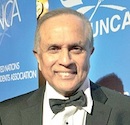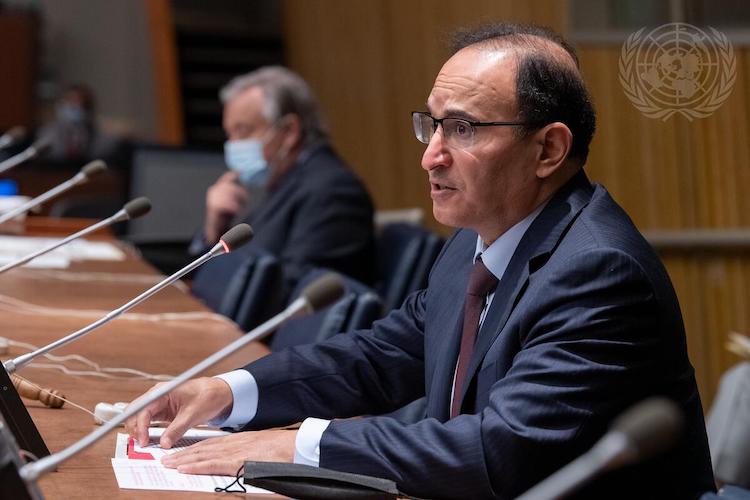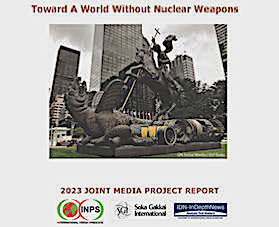By Thalif Deen*
UNITED NATIONS | 12 November 2023 (IDN) — A longstanding proposal for a nuclear-weapons-free zone (NWFZs) in the politically and militarily volatile Middle East has been kicked around the corridors and committee rooms of the United Nations since 1995.
Over the last 28 years, the proposal has failed to get off the ground—and remains suspended in mid-air.
But there will be one more try—at least for minimal progress—when the fourth annual session of the “Conference on the Establishment of a Middle East Zone Free of Nuclear Weapons and Other Weapons of Mass Destruction” takes place between 13 and 17 November at the UN headquarters in New York.
Of the world’s nine nuclear powers, Israel is the only country in the Middle East that has gone nuclear—while the other eight nuclear countries worldwide are the US, UK, France, China, Russia, India, Pakistan and North Korea.
As with the first three sessions, Israel and its closest political and military ally, the United States, are not expected to attend. They will both be MIA’s—missing in action.
Meanwhile, there is widespread speculation that if Iran goes nuclear, as threatened by the Iranians off and on, Saudi Arabia, Turkey and Egypt might follow suit.
But as US President Joe Biden once remarked: “…and the last goddamn thing we need in that part of the world is a build-up of nuclear capability.”
Israel’s nuclear weapons are best ignored?
But like most US politicians and presidents, including former US President Barack Obama, Biden too believes that Israel’s nuclear weapons are best ignored—and never challenged in public.
Dr M.V. Ramana, Professor and Simons Chair in Disarmament, Global and Human Security, School of Public Policy and Global Affairs at the University of British Columbia, Vancouver, told IDN the idea of a Middle East zone free of nuclear weapons was first adopted at the 1995 NPT Review and Extension Conference.
He pointed out that the very first resolution of the UN General Assembly’s First Committee on International Security back from 1946 called for proposals for “the elimination from national armaments of atomic weapons and of all other major weapons adaptable to mass destruction”.
“The closest agreement we have that goes some way toward achieving that goal is the Treaty on the Prohibition of Nuclear Weapons (TPNW) from 2017—seventy-one years after the first resolution. So, we have to be patient in this quest.”
Important to confer on the establishment of a Nuclear-Weapons-Free Middle East
“That said, this is an important time to be holding a conference on the establishment of a Middle East zone free of nuclear weapons,” he said.
“Israel’s ongoing bombing of Gaza, and the call to drop a nuclear weapon there, albeit by a junior minister who has since been fired, only provides more reason to push for eliminating the most destructive weapons known to humankind from Israel’s arsenal.”
More generally, he argued, the highly charged security environment in the region is also a reason to prevent other countries from not just acquiring such weapons, but even the means to make the fissile materials needed for nuclear weapons.
“I am talking, of course, about nuclear power plants. In addition to what is happening in the Middle East, the other war that has receded slightly from the headlines these days—in Ukraine—should remind us of how these reactors can become targets in future wars, and produce fears of widespread and long-lived radioactive contamination, as has been the case with the Zaporizhzhia nuclear plant in Ukraine, since February 2022 and its occupation by Russian forces,” Dr Ramana declared.
According to the 2023 Yearbook of the Stockholm International Peace Research Institute (SIPRI), Russia and the US together possess almost 90 per cent of all nuclear weapons. The sizes of their respective nuclear arsenals (i.e. useable warheads) seem to have remained relatively stable in 2022, although transparency regarding nuclear forces declined in both countries in the wake of Russia’s invasion of Ukraine in February 2022.
In addition to their useable nuclear weapons, Russia and the US each hold more than 1,000 warheads previously retired from military service, which they are gradually dismantling.
Israel—which does not publicly acknowledge possessing nuclear weapons—is also believed to be modernizing its nuclear arsenal, says SIPRI.
Meanwhile, since 1967, five nuclear-weapon-free zones (NWFZ) have been established worldwide—in Latin America and the Caribbean, South Pacific, Southeast Asia, Africa and Central Asia. But such a weapons-free zone in the conflict-ridden Middle East continues to remain elusive.
UN Secretary-General António Guterres points out that the established five zones include 60 percent of the UN’s 193 Member States—and cover almost all of the Southern Hemisphere.
According to the UN, the fourth annual session is being held pursuant to General Assembly decision A/DEC/73/546 (22 December 2018), which “entrusts the Secretary-General with the convening, … for the duration of one week at the United Nation Headquarters, of a conference on the establishment of a Middle East zone free of nuclear weapons and other weapons of mass destruction”.
The first session of the Conference was held from 18 November to 22 November 2019 under the presidency of Ambassador Sima Bahous of Jordan.
Due to the COVID-19 pandemic and its impact on the United Nations conferences and meetings, the second session was postponed and was later held from 29 November to 3 December 2021 under the presidency of Ambassador Mansour Al-Otaibi of Kuwait.
The third session was held from 14 to 18 November 2022 under the presidency of Jeanne Mrad of Lebanon.
For information on the previous sessions, intersessional workshops, as well reports of the Secretary-General on the Conference, check the links below:
First session of the Conference – 18 to 22 November 2019
First informal workshop – 7 to 9 July 2020
Second informal workshop – 23 to 25 February 2021
Second session of the Conference – 29 November to 3 December 2021
Third session of the Conference – 14 to 18 Novembers 2022
Reports of the Secretary-General
 *Thalif Deen, Editor-at-Large at the Berlin-based In-Depth News (IDN) service, is a former Senior Defense Analyst at Forecast International, Military Editor, Middle East/Africa at Jane’s Information Group and Director, Foreign Military Markets at Defense Marketing Services. [IDN-InDepthNews]
*Thalif Deen, Editor-at-Large at the Berlin-based In-Depth News (IDN) service, is a former Senior Defense Analyst at Forecast International, Military Editor, Middle East/Africa at Jane’s Information Group and Director, Foreign Military Markets at Defense Marketing Services. [IDN-InDepthNews]
Photo: The Second Session of the Conference on the Establishment of a Middle East Zone Free of Nuclear Weapons and Other Weapons of Mass Destruction was held from 29 November to 3 December 2021 at United Nations Headquarters in New York under the presidency of Kuwait, with President-designate Ambassador Mansour Al-Otaibi. Credit: United Nations.













